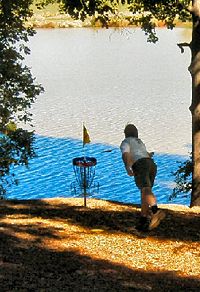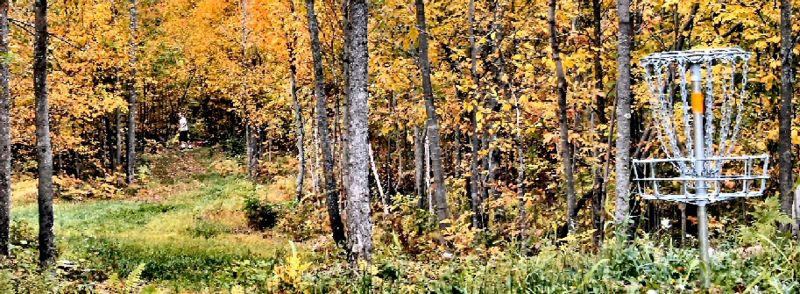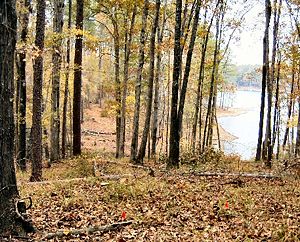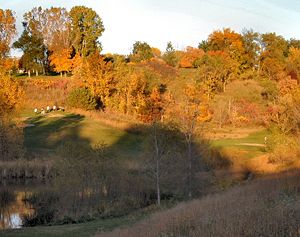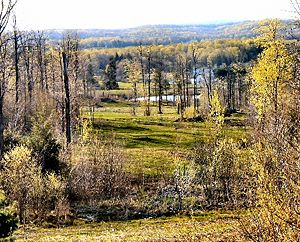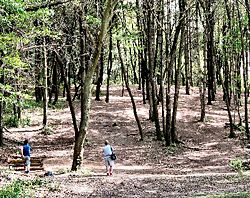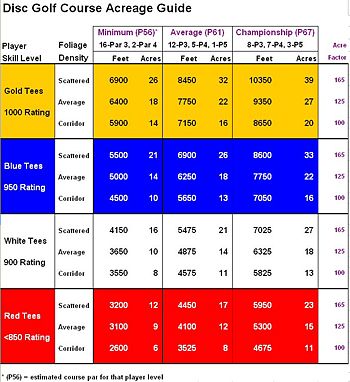Difference between revisions of "Main Page"
From DGCDwiki
(→Tennessee thru Wisconsin) |
(→Alabama thru Indiana) |
||
| Line 54: | Line 54: | ||
[[Image:IDGC_N5.jpg|300px|thumb|right|IDGC Steady Ed Hole 5, Appling, GA]] | [[Image:IDGC_N5.jpg|300px|thumb|right|IDGC Steady Ed Hole 5, Appling, GA]] | ||
<table> <tr> <td>'''State'''</td><td>'''City'''</td><td>'''Last'''</td><td>'''First'''</td><td>'''Group'''</td><td>'''Contact''' </td></tr> | <table> <tr> <td>'''State'''</td><td>'''City'''</td><td>'''Last'''</td><td>'''First'''</td><td>'''Group'''</td><td>'''Contact''' </td></tr> | ||
| − | <tr><td>AL</td><td>Athens</td><td>Bullington</td><td>Bill</td><td>Designer</td><td>Email </td></tr> <tr> <td>'''AL'''</td><td>'''Hoover'''</td><td>'''Monroe'''</td><td>'''Tom'''</td><td>'''Master Designer'''</td><td>[[User:TMonroe|Web page]] </td></tr> <tr> <td>AL</td><td>Huntsville</td><td>Wagnon</td><td>Bill</td><td>Designer</td><td>Email </td></tr> <tr> <td>AL</td><td>Huntsville</td><td>Wolfe</td><td>Lavone</td><td>Senior Designer</td><td>Email </td></tr> <tr> <td>AL</td><td>Mobile</td><td>Sherrod</td><td>Joe</td><td>Senior Designer</td><td>Email </td></tr> <tr> <td>CA</td><td>Ballico</td><td>Marciel</td><td>Jack</td><td>Designer</td><td>Email </td></tr> <tr> <td>CA</td><td>Hayward</td><td>Muise</td><td>Leonard</td><td>Designer</td><td>Email </td></tr> <tr> <td>'''CA'''</td><td>'''Ontario'''</td><td>'''Dunipace'''</td><td>'''Dave'''</td><td>'''Senior Designer'''</td><td>[[User:DDunipace|Web page]] </td></tr> <tr> <td>CA</td><td>San Jose</td><td>Challas</td><td>Jim</td><td>Designer</td><td>Email </td></tr> <tr> <td>CA</td><td>Solana Beach</td><td>Cade</td><td>Sunny</td><td>Designer</td><td>Email </td></tr> <tr> <td>CA</td><td>Somerset</td><td>Callahan</td><td>Charlie</td><td>Senior Designer</td><td>Email </td></tr> <tr> <td>CA</td><td>Willow Creek</td><td>Belchik</td><td>Mike</td><td>Designer</td><td>Email </td></tr> <tr> <td>CO</td><td>Ft. Collins</td><td>Young</td><td>Kirk</td><td>Designer</td><td>Email </td></tr> <tr> <td>CO</td><td>Gunnison</td><td>Brown</td><td>Chris</td><td>Designer</td><td>Email </td></tr> <tr> <td>'''FL'''</td><td>'''Orlando'''</td><td>'''Hosfeld'''</td><td>'''Gregg'''</td><td>'''Senior Designer'''</td><td>[[User:GHosfeld|Web page]] </td></tr> <tr> <td>'''FL'''</td><td>'''Orlando'''</td><td>'''Greer'''</td><td>'''Chad'''</td><td>'''Designer'''</td><td>[[User:CGreer|Web page]] </td></tr> <tr> <td>FL</td><td>Orlando</td><td>Janssen</td><td>Mark</td><td>Designer</td><td>Email </td></tr> <tr> <td>FL</td><td>Tampa</td><td>Ritner</td><td>Denny</td><td>Designer</td><td>Email </td></tr> <tr> <td>GA</td><td>Athens</td><td>Porter</td><td>Doug</td><td>Designer</td><td>Email </td></tr> <tr> <td>GA</td><td>Atlanta</td><td>David</td><td>John</td><td>Master Designer</td><td>Email </td></tr> <tr> <td>GA</td><td>Atlanta</td><td>Ritger</td><td>John</td><td>Designer</td><td>Email </td></tr> <tr> <td>GA</td><td>Augusta</td><td>May</td><td>Pete</td><td>Designer</td><td>Email </td></tr> <tr> <td>GA</td><td>Cummings</td><td>Harris</td><td>Ryan</td><td>Designer</td><td>Email </td></tr> <tr> <td>GA</td><td>Evans</td><td>Gentry</td><td>David</td><td>Designer</td><td>Email </td></tr> <tr> <td>GA</td><td>Senoia</td><td>McCoy</td><td>Kevin</td><td>Designer</td><td>Email </td></tr> <tr> <td>IA</td><td>Ames</td><td>Kenton</td><td>Steve</td><td>Senior Designer</td><td>[mailto:cydisc@mchsi.com Email]</td></tr> <tr> <td>IA</td><td>Des Moines</td><td>Latch</td><td>Jon</td><td>Designer</td><td>Email </td></tr> <tr> <td>ID</td><td>Blackfoot</td><td>Lyksett</td><td>Jon</td><td>Designer</td><td>Email </td></tr> <tr> <td>ID</td><td>Boise</td><td>Bekker</td><td>Walter</td><td>Designer</td><td>Email </td></tr> <tr> <td>IL</td><td>Aurora</td><td>Cook</td><td>Matt</td><td>Designer</td><td>Email </td></tr> <tr> <td>IL</td><td>Joliet</td><td>Lewis</td><td>Gary</td><td>Master Designer</td><td>Email </td></tr> <tr> <td>IL</td><td>Rantoul</td><td>Wallis</td><td>Wilbur</td><td>Designer</td><td>Email </td></tr> <tr> <td>IL</td><td>Waukegan</td><td>Klem</td><td>Jim</td><td>Designer</td><td>Email </td></tr> <tr> <td>IN</td><td>Bloomington</td><td>Madsen</td><td>Steve</td><td>Designer</td><td>Phone </td></tr> <tr> <td>'''IN'''</td><td>'''Fishers'''</td><td>'''Byrne'''</td><td>'''Dennis'''</td><td>'''Designer'''</td><td>[[User:Dbyrne|Web page]] </td></tr> <tr> <td>IN</td><td>Indianapolis</td><td>Suiter</td><td>Jerry</td><td>Designer</td><td>Email </td></tr> <tr> <td>IN</td><td>Munster</td><td>Cummings</td><td>Brian</td><td>Designer</td><td>Email </td></tr> </table> | + | <tr><td>AL</td><td>Athens</td><td>Bullington</td><td>Bill</td><td>Designer</td><td>Email </td></tr> <tr> <td>'''AL'''</td><td>'''Hoover'''</td><td>'''Monroe'''</td><td>'''Tom'''</td><td>'''Master Designer'''</td><td>[[User:TMonroe|Web page]] </td></tr> <tr> <td>AL</td><td>Huntsville</td><td>Wagnon</td><td>Bill</td><td>Designer</td><td>Email </td></tr> <tr> <td>AL</td><td>Huntsville</td><td>Wolfe</td><td>Lavone</td><td>Senior Designer</td><td>Email </td></tr> <tr> <td>AL</td><td>Mobile</td><td>Sherrod</td><td>Joe</td><td>Senior Designer</td><td>Email </td></tr> <tr> <td>CA</td><td>Ballico</td><td>Marciel</td><td>Jack</td><td>Designer</td><td>Email </td></tr> <tr> <td>CA</td><td>Hayward</td><td>Muise</td><td>Leonard</td><td>Designer</td><td>Email </td></tr> <tr> <td>'''CA'''</td><td>'''Ontario'''</td><td>'''Dunipace'''</td><td>'''Dave'''</td><td>'''Senior Designer'''</td><td>[[User:DDunipace|Web page]] </td></tr> <tr> <td>CA</td><td>San Jose</td><td>Challas</td><td>Jim</td><td>Designer</td><td>Email </td></tr> <tr> <td>CA</td><td>Solana Beach</td><td>Cade</td><td>Sunny</td><td>Designer</td><td>Email </td></tr> <tr> <td>CA</td><td>Somerset</td><td>Callahan</td><td>Charlie</td><td>Senior Designer</td><td>Email </td></tr> <tr> <td>CA</td><td>Willow Creek</td><td>Belchik</td><td>Mike</td><td>Designer</td><td>Email </td></tr> <tr> <td>CO</td><td>Ft. Collins</td><td>Young</td><td>Kirk</td><td>Designer</td><td>Email </td></tr> <tr> <td>CO</td><td>Gunnison</td><td>Brown</td><td>Chris</td><td>Designer</td><td>Email </td></tr> <tr> <td>'''FL'''</td><td>'''Orlando'''</td><td>'''Hosfeld'''</td><td>'''Gregg'''</td><td>'''Senior Designer'''</td><td>[[User:GHosfeld|Web page]] </td></tr> <tr> <td>'''FL'''</td><td>'''Orlando'''</td><td>'''Greer'''</td><td>'''Chad'''</td><td>'''Designer'''</td><td>[[User:CGreer|Web page]] </td></tr> <tr> <td>FL</td><td>Orlando</td><td>Janssen</td><td>Mark</td><td>Designer</td><td>Email </td></tr> <tr> <td>FL</td><td>Tampa</td><td>Ritner</td><td>Denny</td><td>Designer</td><td>Email </td></tr> <tr> <td>GA</td><td>Athens</td><td>Porter</td><td>Doug</td><td>Designer</td><td>Email </td></tr> <tr> <td>GA</td><td>Atlanta</td><td>David</td><td>John</td><td>Master Designer</td><td>Email </td></tr> <tr> <td>GA</td><td>Atlanta</td><td>Ritger</td><td>John</td><td>Designer</td><td>Email </td></tr> <tr> <td>GA</td><td>Augusta</td><td>May</td><td>Pete</td><td>Designer</td><td>Email </td></tr> <tr> <td>GA</td><td>Cummings</td><td>Harris</td><td>Ryan</td><td>Designer</td><td>Email </td></tr> <tr> <td>GA</td><td>Evans</td><td>Gentry</td><td>David</td><td>Designer</td><td>Email </td></tr> <tr> <td>GA</td><td>Senoia</td><td>McCoy</td><td>Kevin</td><td>Designer</td><td>Email </td></tr> <tr> <td>IA</td><td>Ames</td><td>Kenton</td><td>Steve</td><td>Senior Designer</td><td>[mailto:cydisc@mchsi.com Email]</td></tr> <tr> <td>IA</td><td>Des Moines</td><td>Latch</td><td>Jon</td><td>Designer</td><td>Email </td></tr> <tr> <td>ID</td><td>Blackfoot</td><td>Lyksett</td><td>Jon</td><td>Designer</td><td>Email </td></tr> <tr> <td>ID</td><td>Boise</td><td>Bekker</td><td>Walter</td><td>Designer</td><td>Email </td></tr> <tr> <td>IL</td><td>Aurora</td><td>Cook</td><td>Matt</td><td>Designer</td><td>Email </td></tr> <tr> <td>IL</td><td>Joliet</td><td>Lewis</td><td>Gary</td><td>Master Designer</td><td>Email </td></tr> <tr> <td>IL</td><td>Rantoul</td><td>Wallis</td><td>Wilbur</td><td>Designer</td><td>Email </td></tr> <tr> <td>IL</td><td>Waukegan</td><td>Klem</td><td>Jim</td><td>Designer</td><td>Email </td></tr> <tr> <td>IN</td><td>Bloomington</td><td>Madsen</td><td>Steve</td><td>Designer</td><td>Phone </td></tr> <tr> <td>'''IN'''</td><td>'''Fishers'''</td><td>'''Byrne'''</td><td>'''Dennis'''</td><td>'''Designer'''</td><td>[[User:Dbyrne|Web page]] </td></tr> <tr> <td>IN</td><td>Indianapolis</td><td>Suiter</td><td>Jerry</td><td>Designer</td><td>Email </td></tr> <tr> <td>IN</td><td>Munster</td><td>Cummings</td><td>Brian</td><td>Designer</td><td>[mailto:brian@catalystprodjs.com Email] </td></tr> </table> |
==Kansas thru North Dakota== | ==Kansas thru North Dakota== | ||
Revision as of 12:33, 30 December 2012
DISC GOLF COURSE DESIGNERS
The Disc Golf Course Designers (DGCD) is a group dedicated to pursuing excellence in disc golf course design for all skill levels. The DGCD was founded in 1994 by Ed Headrick, Tom Monroe, John David and Chuck Kennedy. We have grown to more than 120 members at the end of 2008. Our basic design standards have been adopted by the Professional Disc Golf Association (PDGA) and are posted at their website.
The current member list is shown with many members providing their design experience on this site and/or linking to their design websites. At this point, there are no professional requirements for becoming a member. However, within our group, more experienced designers have earned the title of Senior or Master designer which is designated by their name. Contact Chuck Kennedy for information on membership.
Contents
Choosing the Best Course Designer for your Project
Once you’ve provided the property, nothing will impact the experience of your players more than the course design. Make sure it’s the best you can afford. This is a guide to help land owners and park supervisors choose the appropriate designer to develop safe, challenging and enjoyable courses for their community.
Disc golf has come a long way since the 70s, when many courses used trees and light poles for targets. Older courses – many times designed by local players with little design experience and few qualifications – have become outdated and even less safe in some cases. As disc technology, park operations experience and player expectations have advanced through the years, the art and science of course design have also advanced. In the past 10 years, the PDGA has been systematically developing course design guidelines in cooperation with the Disc Golf Course Designers (DGCD) group. The DGCD is an independent group of 120 designers with a wide range of experience, dedicated to excellence in course design for players of all skill levels.
There is no formal certification or state licensing program for course designers. So, beware of anyone indicating they have such credentials. No colleges yet have a curriculum for disc golf course design. The closest relevant degree is in landscape architecture. But even those programs aren’t known to directly address disc golf issues. Here are several questions a land owner/developer should ask a potential course designer to determine whether they have the necessary skills and experience to design and develop appropriate courses to meet the needs of their project and their community.
1. PDGA Course Development Guidelines – Designer openly supports designing disc golf courses following the PDGA guidelines available here: PDGA Skill Level Design Guidelines and Basic Course Design Standards
2. References – Contact those who hired the designer for their projects. Contact target manufacturers to locate experienced designers in your area. Contact PDGA HQ for information on designers in your area at: 706-261-6342
3. Courses Designed Resume – The designer should provide a list of courses developed indicating their level of design involvement with each project. Most designers have fulltime jobs and have honed their design skills over several years working part-time on a few local courses. The handful of designers who develop courses as a primary part of their professional activities will likely have their design resumes on a website listed here.
4. Specific Experience for your Project – Does the designer have experience with your type of course development project? Is your project a public or private development, a multi-course complex, or a property with alternating seasonal use like downhill or cross-country skiing? Does the designer have experience developing courses on your type of terrain such as dealing with erosion issues on steep hills, identifying appropriate trees for clearing and saving on heavily wooded parcels, or designing safely on sites with several bodies of water?
5. DGCD Membership and Level – People may join the Disc Golf Course Designers group by paying dues. They automatically receive the basic title of Designer. However, DGCD Members who have significantly more design experience earn the higher levels of Senior Designer and then Master Designer. However, even relatively new Designers are at least exposed to the current advances for developing good courses.
6. Training & Education – Has the designer studied under and/or worked with more experienced designers to learn the craft? Does designer have much experience with landscape architecture projects, possibly a degree, to assist with your property development issues? Or how about having business experience or education to provide guidance for helping set up your “for profit” disc golf operation? Does designer have experience teaching disc throwing skills in a class environment or with national education programs such as EDGE for children?
7. Technology Expertise – Does designer own and use state-of-the-art equipment and processes such as laser rangefinders for distance measurement, GPS system if mapping the base site is needed, or topographical software and related graphics programs to produce professional maps and scorecards?
8. Years as a PDGA Member – Indicates the designer has likely been exposed to and possibly participated in the evolution of the current PDGA course development guidelines.
Design expectations and requirements have advanced to the point where land stewards run the risk of making a poor choice by placing inexperienced local player volunteers in charge of their course design. Some local disc golf pros feel they can design courses even without relevant design experience. These volunteers should definitely be encouraged to work with a hired professional designer to provide design feedback and especially to test each draft of a course layout as it evolves. Safety and liability concerns for your course layout in addition to lack of design experience are important reasons to avoid placing local players, scouts, or high school students in charge of the project. Scouts are a great resource for building course amenities like tee signs, benches and information boards, just not doing the course design.
Actual design fees range from 10-20% of the true total cost of a course development project. The true total cost includes the estimated labor cost of local volunteers and public workers, who are usually involved building Park & Recreation courses, even if their wages aren’t specifically considered part of the project cost by the supervising authority. If the designer’s quote is more than 20% of the project cost, it’s usually because they will have additional costs such as non-local travel expenses, or they are quoting additional services not part of the basic design such as more comprehensive site mapping, supervising or actually performing tree clearing, or providing business operations training.
Good luck with your course project. Contact PDGA HQ or call 706-261-6342 for additional information.
DGCD Current Members
Contact Chuck Kennedy to get Member Email address or Phone if not shown.
Alabama thru Indiana
| State | City | Last | First | Group | Contact |
| AL | Athens | Bullington | Bill | Designer | |
| AL | Hoover | Monroe | Tom | Master Designer | Web page |
| AL | Huntsville | Wagnon | Bill | Designer | |
| AL | Huntsville | Wolfe | Lavone | Senior Designer | |
| AL | Mobile | Sherrod | Joe | Senior Designer | |
| CA | Ballico | Marciel | Jack | Designer | |
| CA | Hayward | Muise | Leonard | Designer | |
| CA | Ontario | Dunipace | Dave | Senior Designer | Web page |
| CA | San Jose | Challas | Jim | Designer | |
| CA | Solana Beach | Cade | Sunny | Designer | |
| CA | Somerset | Callahan | Charlie | Senior Designer | |
| CA | Willow Creek | Belchik | Mike | Designer | |
| CO | Ft. Collins | Young | Kirk | Designer | |
| CO | Gunnison | Brown | Chris | Designer | |
| FL | Orlando | Hosfeld | Gregg | Senior Designer | Web page |
| FL | Orlando | Greer | Chad | Designer | Web page |
| FL | Orlando | Janssen | Mark | Designer | |
| FL | Tampa | Ritner | Denny | Designer | |
| GA | Athens | Porter | Doug | Designer | |
| GA | Atlanta | David | John | Master Designer | |
| GA | Atlanta | Ritger | John | Designer | |
| GA | Augusta | May | Pete | Designer | |
| GA | Cummings | Harris | Ryan | Designer | |
| GA | Evans | Gentry | David | Designer | |
| GA | Senoia | McCoy | Kevin | Designer | |
| IA | Ames | Kenton | Steve | Senior Designer | |
| IA | Des Moines | Latch | Jon | Designer | |
| ID | Blackfoot | Lyksett | Jon | Designer | |
| ID | Boise | Bekker | Walter | Designer | |
| IL | Aurora | Cook | Matt | Designer | |
| IL | Joliet | Lewis | Gary | Master Designer | |
| IL | Rantoul | Wallis | Wilbur | Designer | |
| IL | Waukegan | Klem | Jim | Designer | |
| IN | Bloomington | Madsen | Steve | Designer | Phone |
| IN | Fishers | Byrne | Dennis | Designer | Web page |
| IN | Indianapolis | Suiter | Jerry | Designer | |
| IN | Munster | Cummings | Brian | Designer |
Kansas thru North Dakota
| State | City | Last | First | Group | Contact |
| KS | St. Mary's | Mann | Paul | Designer | |
| KS | Stilwell | Parker | Dick | Designer | |
| KS | Valley Center | Paulson | Bill | Designer | |
| KS | Wichita | Schoenhofer | Michael | Designer | |
| KY | Bowling Green | Clark | H. B. | Senior Designer | Web page |
| KY | Louisville | Greenwell | David | Senior Designer | |
| KY | Nicholasville | Lasley | Everett | Designer | |
| KY | Wilmore | McCoon, Jr. | Lyle | Designer | |
| MA | Amherst | Giggey | Brian | Designer | Web page |
| MD | Gathersburg | Gangloff | Craig | Designer | |
| ME | Auburn | Adell | Gordy | Designer | |
| MI | Ann Arbor | Calhoun | Terry | Designer | |
| MI | Kentwood | Cox | Elmer | Designer | |
| MI | Lansing | Ramon | Michele | Designer | |
| MI | Marquette | Kopacz | Tim | Designer | Web page |
| MN | Andover | Snelson | Mike | Designer | |
| MN | Burnsville | Ashton | Bill | Designer | |
| MN | Inver Grove | Kennedy | Chuck | Master Designer | Web page |
| MN | Lauderdale | Walli | Brian | Designer | |
| MN | Minneapolis | Rife | Greg | Designer | |
| MN | North Oaks | West | Steve | Designer | Web page |
| MN | Richfield | Gill | Timmy | Designer | Web page |
| MN | St. Cloud | Mackey | Tim | Master Designer | |
| MN | Springfield | Tonn | Derek | Designer | |
| MN | Virginia | Tomonovich | Anton | Designer | |
| MO | Blue Springs | Theiss | John | Designer | |
| MO | Branson | Kalich | Sean | Designer | |
| MO | Kansas City | Lowe | Jack | Designer | |
| MO | St. Louis | McCormack | Dave | Senior Designer | Web page |
| MO | Draz | Dave | Designer | ||
| MT | Whitefish | Staves | Neil | Designer | |
| NC | Charlotte | Holgate | Mike | Designer | |
| NC | Charlotte | Poole | Jonathan | Designer | |
| NC | Garner | Bibby | Lowe | Designer | |
| NC | Indian Trail | McDaniel | Stan | Senior Designer | |
| NC | Indian Trail | Schwarz | Russell | Designer | |
| NC | Raleigh | Howard | Carlton | Senior Designer | |
| NC | Raleigh | Vigoda | Michal | Designer | Web page |
| NC | Meigs | Brian | Designer | ||
| ND | Dickinson | Nodland | Darrell | Senior Designer | Phone |
| ND | Fargo | Karl | Pete | Designer |
Nebraska thru South Dakota
| State | City | Last | First | Group | Contact |
| NE | Amherst | Rodiek | Dusty | Designer | |
| NE | Lincoln | Chisholm | Andrew | Designer | |
| NE | Lincoln | Jackson | Anita | Designer | |
| NE | Omaha | Martin | Aaron | Designer | |
| NM | Kingston | Fust | Pete | Designer | |
| NM | Vadito | Leslie | Bill | Designer | |
| NM | Vadito | Leslie | Sue | Designer | |
| NY | Grand Island | Stephens | Paul | Designer | Phone |
| NY | Ithaca | Govang | Pat | Designer | |
| NY | Warwick | Doyle | Dan | Senior Designer | Web page |
| OH | Cincinnati | Jones | Adam | Designer | |
| OH | Clinton | Griffith | Bill | Designer | |
| OH | Columbus | Warner | Derek | Designer | Address |
| OK | Blackwell | Convers, Jr. | Ron | Designer | |
| OK | Duncan | Lowry | Tom | Senior Designer | |
| OR | Grants Pass | Chard | Robert | Designer | |
| OR | Salem | Huggins | Brad | Designer | |
| PA | Emmaus | Winn | Shannon | Designer | |
| PA | Haverford | Stembel | Dave | Designer | |
| PA | Hermitage | Givens | Rich | Designer | |
| PA | Huntingdon Valley | Duesler Jr | Dr. John | Designer | |
| PA | Kunkletown | Kofron | Steve | Designer | Phone |
| PA | Martinsburg | Keim | Eric | Designer | |
| PA | Mechanicsburg | Lynn | Joe | Senior Designer | |
| PA | Pittsburgh | Dropcho | J. Gary | Senior Designer | |
| PA | State College | Mohring | Mike | Designer | |
| PA | West Lawn | LaGrassa | Jeff | Designer | |
| SC | Anderson | Barfield | David | Designer | |
| SC | Greenville | Farrell | Pat | Designer | |
| SC | Rock Hill | Duvall | Harold | Master Designer | Web page |
| SD | Sioux Falls | Wheeler | John | Designer | |
| SD | Vermillion | Huff | Brian | Designer | Phone |
| SD | Vermillion | Woods | Dion | Designer |
Tennessee thru Wisconsin
| State | City | Last | First | Group | Contact |
| TN | Brentwood | Pittman | Ron | Designer | |
| TN | Goodlettsville | Lee | Cody | Designer | |
| TN | Nashville | Boutte | Daniel | Designer | |
| TN | Summertown | Pascarelli | Kenny | Designer | Web page |
| TX | Abilene | Kingston | Jerry | Designer | |
| TX | Arlington | Brenner | Pat | Designer | |
| TX | Austin | Houck | John | Master Designer | Web page |
| TX | Austin | Olse | Michael | Designer | Web page |
| TX | Austin | Tolbert | Zac | Designer | |
| TX | Houston | Lehmann | Andi | Designer | Web page |
| TX | Irving | Morrow | K. Kevin | Designer | |
| TX | Lubbock | Kitten | Patrick | Senior Designer | |
| TX | Missouri City | Jubin | Eric | Designer | |
| TX | Plano | Duke | Gary | Designer | |
| TX | San Angelo | Keane | Mike | Designer | |
| TX | Spring | Young | Don | Designer | Web page |
| TX | Tyler | Nance | Lawrence | Designer | |
| VA | Alexandria | Beron | Tim | Designer | |
| VA | Wallops Island | Conger | Mike | Senior Designer | |
| VA | Williamsburg | Roy | John | Designer | |
| VT | Grafton | Ferrara | Chris | Designer | Phone |
| VT | South Burlington | Hall | Larry | Designer | |
| WA | Port Orchard | Conte | John | Designer | |
| WI | Appleton | Jenkins | Tom | Designer | |
| WI | Appleton | Martin | Rich | Designer | |
| WI | Blue Mound | Hoffman | Don | Master Designer | |
| WI | Cedarburg | Dorn | John | Designer | |
| WI | Cross Plains | Johnson | Seth | Designer | |
| WI | Markesan | Blake | Pat | Designer | |
| WI | Menomonee Falls | Miller | Terry | Designer | |
| WI | Menomonie | Hendrickson | Jason | Designer | Web page |
| WI | Milwaukee | Lennie | Brian | Designer | |
| WI | Mosinee | Hoover | Pete | Designer | |
| WI | Osseo | Ticknor | Don | Designer | Web page |
| WI | Stevens Point | Schukar | Randy | Designer | |
| WI | Wauwatosa | Harrington | Mike | Designer |
International
| Country | Last | First | Group | Contact |
| Denmark | Madsen | Anders | Designer | |
| Finland | Nieminen | Seppo | Senior Designer | |
| France | Leger | David | Designer | |
| Japan | Nakajima | Saori | Designer | Address |
| New Zealand | Marchbank | Tim | Designer | |
| New Zealand | Caesar | Scott | Designer | |
| Slovakia | Vigoda | Michal | Designer | Web page |
| Canada (BC) | Laitsch | Daniel | Designer | |
| Canada (ON) | Forbes | Glenn | Designer | |
| Canada (ON) | Hoeniger | Brian | Designer | |
| Canada (NS) | Corbett | Michael | Designer | |
| Canada (NS) | Gillett | David | Designer |
Designer Levels
Associate
1) Entry level position for new designers and those simply interested in learning about course design.
Designer
1) Played a minimum of 12 courses with at least one in four states, provinces and countries.
2) Posted 5 course reviews in the PDGA Course Directory.
3) Designed or co-designed equivalent of two 18-hole courses.
Senior Designer
1) Played a minimum of 30 courses with at least one in eight states, provinces and countries.
2) Posted 10 more course reviews (15 overall) in the PDGA Course Directory.
3) Analyzed event scores in Hole Forecaster for three of your designs.
4) Designed or co-designed five courses, at least four permanent 18s.
Master Designer
1) Played a minimum of 75 courses with at least one in twelve states, provinces and countries.
2) Posted 10 more course reviews (25 overall) in the PDGA Course Directory
3) Used Hole Forecaster in advance for two course designs, analyzed event scores on at least 5 courses and improved holes as a result on at least two courses.
4) Designed or co-designed ten courses, at least eight permanent 18s.
5) Designer or primary coordinator for course setups used in at least one PDGA Major or an equivalent set of higher tier events.
6) Trained at least one other person on design methods on one of your projects.
7) Recommended by two other Sr or Master DGCD designers familiar with your designs.
The Hole Forecaster is software provided to DGCD members to help them design and analyze course designs.
Basic Disc Golf Course Design Standards
Disc Golf Course Design Goals
Members of the DGCD pledge to support these design goals upon joining the group.
A. Satisfy the design requirements of the people and organizations who approve use of the land and fund the equipment for the course.
B. Design course to be safe for both players and non-players who may pass near or through the course.
C. Design course with the potential for multiple configurations to serve not only beginners but players with advanced skills; consistent with the budget and design needs expressed in Goal A above.
D. Design a well balanced course with a wide range of hole lengths and a good mixture of holes requiring controlled left, right and straight throws.
E. Utilize elevation changes and available foliage as well as possible. Take care to minimize potential damage to foliage and reduce the chances for erosion.
Course Design Assistance
There are several documents available on the PDGA website to help with course design There are additional design resources available online, primarily at the websites of target manufacturers. Contact information for manufacturers of PDGA approved targets can be found at the end of the following document: Approved Disc & Targets Course design has gotten more sophisticated over the years and there’s nothing like seeking experienced design help from qualified individuals.
Experienced designers can be well worth their fees by guiding clients thru the process, recommending cost effective processes and equipment alternatives, and perhaps most importantly, reducing chances for safety related problems. While youth and service groups like the Boy Scouts and Lions club can provide a significant source of labor and even funding, they should be guided by an experienced designer to develop a safe and successful installation. Some of the lowest rated and least used courses were installed by these groups and local players without appropriate design guidance to avoid problems.
Course Design Elements
Space Required
The first decision is to determine what type of course you would like to develop and whether enough space is available for that type of course. The amount of space available can sometimes depend on whether brush and trees can be removed to create fairways. Ideally, a well balanced course has a mixture of holes that go completely thru the woods, partially thru woods and mostly in the open. Typically, fairways in the woods range from 20-40 feet wide. This usually means that some larger trees sometimes need to be removed to create fair flight paths.
Most new courses are being developed with two sets of tees to better serve the different skill levels of players in the community, even if both sets aren’t installed right away due to budget constraints. Four levels of player skills (Gold, Blue, White and Red) have been defined with design guidelines for each level PDGA Skill Level Guidelines Public courses are usually designed with a combination of Blue & Red or White & Red tees to meet the needs of most players. Well developed disc golf markets and private facilities can sometimes justify installing a few of the longest, most challenging courses that include Gold tees for the highest level of players, although it still makes sense to install a set of shorter tees for White or Red level players.
A full length Championship course can require more than one acre per hole depending on foliage density (more trees, less acreage required). However, a small recreational course can sometimes fit 2-3 holes per acre depending on terrain.
Hole Count
Most courses are either 9 or 18 holes. There are several with 12, 24 or 27 holes. Tradition appears to dictate that the number of holes be divisible by 3. It's better to install a well designed, dual tee 12-hole course than it is to install a cramped, less safe 18-hole course on the same piece of land.
Typical Length
Most courses should have at least one configuration for beginners and casual recreational players that rarely averages more than 250 feet per hole (75 meters). This works out to a maximum of 4500 ft (1350m) for an 18-hole course or 2250 feet (675m) for a 9-holer. The preferred length range is 3600-4300 feet (1080-1290m) for the shortest setup on a typical 18-hole public course. This is an average length of 200-240 feet per hole (60-73m). No hole should be shorter than 120 feet (35m) even on courses for Red level players, but 150 feet (45m) is the "normal" low end limit.
Longer configurations are achieved by installing alternate tees and/or target positions on several holes. Typical 18-hole course setups for amateur White level players range from 4500-6000 feet (1350-1800m). Course setups longer than 6000 feet (1800m) are primarily for better players at the Blue or Gold level, and for tournament play. There is no maximum length allowed for a hole. The longest holes in the world are about 1200 feet (366m). See: PDGA Skill Level Guidelines
Hole Notes
There should be a preferred flight path to a hole. Ideally, there should be more than one flight path (including rollers) to play several of the holes. There should not be too many obstructions within 30 ft (10m) of each target. An obstruction should not be so imposing that a player can't at least try to putt by stretching sideways, throwing from a low stance or throwing over the top of or through any obstacles near a target.
No player throwing from the shortest (or only) tee on a hole should ever be "forced" to throw over water that is normally greater than 18" deep (50cm). Have an alternate flight path (usually to the left) that gives player the option to not cross water. Any normally dry trenches or bodies of water under 18" deep that are regularly in play should have safe paths down and out to be able to throw and/or retrieve disc safely.
Tee Design
Hard surface tee pads of textured cement or asphalt are preferred. Preferred size is 5 ft wide by at least 12 ft long (1.5x3m). Maximum size is 6 ft wide by 20 ft long with the back end flaring out to 10 feet wide. If you need to conserve materials, make tee pads shorter on short or downhill holes and longer on long holes. For example, a hard surfaced tee pad at the top of a hill on a short hole might only need to be 8 ft long because players will just stand at the front edge of the tee to make their throws.
Non-hard surface tee areas should be even surfaced and not contain protruding rocks or roots. Tee areas should be level from left to right. They should not slope too sharply from front to back. The front edge of tee area must be indicated by the front edge of a tee board buried flush in the ground or by the imaginary line between two stakes that mark the front edge.
Beyond the front of each tee pad should be adequate room for follow-thru so a player doesn't risk twisting an ankle, falling off a ledge or whacking their arm on a tree or sign. If possible, provide adequate level ground for a runup behind each tee pad, especially on longer holes. Avoid major obstructions that severely block flight path up to 20 feet in front of tee.
On courses with alternate tees on some holes, the tees in the shorter positions should always be better or at least equal in quality to those in longer positions. For example, avoid designs where the long tee pads are cement and short tee pads are grass or dirt.
The tee color for each set of tees should match one of the four recognized player skill levels that set of tees was designed for: Gold, Blue, White or Red. Sometimes there’s no room for two tees on every hole. Just make sure to mark each tee on single tee holes with both colors.
Course managers are encouraged to move toward these color guidelines when the opportunity presents itself for new installations, redesigns or course upgrades when their current color(s) do not match the PDGA guidelines.
Targets
Any well marked object, post or basket can serve as a target. Make sure targets do not have any sharp edges to injure players or damage discs. Locally fabricated targets for sale or to be installed on public land must not violate any basket manufacturer's patents. Most PDGA sanctioned events require the use of PDGA approved targets which are listed here: PDGA Approved Disc & Targets
Signs
Install a rules sign prominently before the first tee, plus post a rules sheet on an information board (if there is one). Signs or marker arrows near each target should indicate the direction to next tee (as needed). Signs should indicate Out-of-bounds boundaries and any other areas players should avoid. The shortest tee on each hole should have permanent signs indicating the hole number, length, teeing direction (if needed) and recreational par. Signs on shortest tees should always be equal to or better than those at longer positions on each hole.
Setting Par
Par should be set for each tee/basket position combination on a hole based on the player skill level they were designed for. The document PDGA Skill Level Guidelines provides some assistance for determining these values. In addition, the following document, Par Guidelines, provides a more specific way to determine par based on length and foliage elements of holes for each player skill level. The hole length should be adjusted up or down if it has a significant upslope or downslope based on a 3-to-1 factor (i.e. 30 feet length adjustment for every 10 feet elevation change).
So players know what standard has been used for par, it should be indicated on scorecards and tee signs as Blue Par or Red Par, which hopefully matches the tee color(s) used. When less precise estimates are used to determine par, the older method is to use the terms Expert or Pro Par for longer tees and Standard or Amateur Par for shorter tees.
Course Routing
Fairways should not cross one another and should be far enough apart so errant throws aren't constantly in the wrong fairway. Fairways should not cross or be too close to public streets, sidewalks and other busy areas where non-players congregate. Avoid hazardous areas such as swamps and thorny or poisonous foliage. Tees and targets should be far enough from the targets and fairways of other holes.
The tee for the first hole should be the closest to the regular parking area. The target for the last hole should not be too far from the parking area and relatively close to the first tee. If possible, try to locate at least one other hole in the middle of course near the parking area. Try to minimize the amount of walking between holes (still keeping safety in mind).
ADA Compliance
Sections of many disc golf courses are accessible to at least some people with a disability. The normal challenges presented by the types of holes intrinsic to the sport plus the sometimes rough terrain utilized for courses make it unrealistic to accommodate everyone everywhere. Efforts should be made to try and provide a legitimate opportunity to play for those with disabilities, even if not all holes can be made accessible. In some cases, a multiple hole loop within a section of the course may provide that opportunity.

